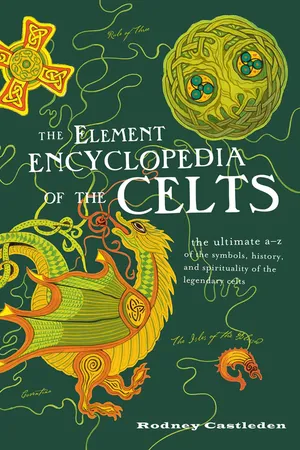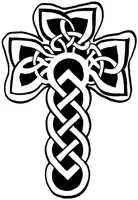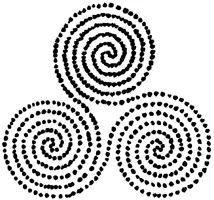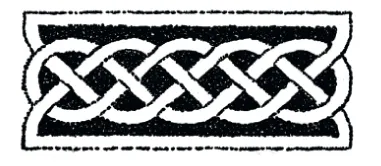![]()
![]()
ADDEDOMARUS
A king of the Trinovantes tribe at the end of the first century BC. His territory consisted of what is now Essex and south Suffolk. Although this area is now part of England, Addedomarus and his people were not English but native Celtic Britons. He was the first British king north of the Thames River to mint inscribed coins.
Addedomarus moved the Trinovantes’ tribal capital from Braughing in Hertfordshire to Camulodunum (Colchester) in Essex. In about 30 BC, Tasciovanus, king of the neighboring Catuvellauni tribe to the west, seized his territory from him and began issuing his own coins from Camulodunum. The two kingdoms were apparently then run jointly from the Trinovantian capital by the Catuvellaunian king.
Addedomarus somehow regained control in about 20 BC and reigned over the Trinovantes until his death in 10 BC (approximate dates). He is thought to be the king who was buried in the Lexden Tumulus in Camulodunum. On his death, he was succeeded by Dubnovellaunus.
In the Welsh Triads, Addedomarus is remembered as one of the founders of Britain.
ADOMNÁN
Abbot of Iona 686–704. He was the main northern Irish advocate of support for the Roman Easter. With others, in 697, he was responsible for setting up the Cain Adomnain, a code of war designed to protect non-combatants. He went to Northumbria in 686 to negotiate the release of 60 Irish prisoners abducted by the Northumbrians in a raid.
AED
Sixth-century Irishman, brought up in Meath without any education. His brothers divided their father’s inheritance, giving him nothing. To force their hand, he abducted a young woman. He was rebuked by Bishop Illand for his action and promised something better if he entered the Church, which he did.
Aed was consecrated bishop in Meath, where he founded monasteries and performed miracles. He also secured the release of many slaves and prisoners who wanted to enter monasteries: it was a recruitment drive.
AEDAN
Aedan was a sixth-century monk sent from Iona to Lindisfarne as bishop. He was abbot of the Columban house of Lindisfarne (north of Bamburgh) and bishop of the Northumbrians. The chronicler Bede emphasized the singleminded simplicity of his life.
AEDAN MAC GABRAIN
Aedan mac Gabrain was King of Dal Riada in south-western Scotland. He was probably born about 550 and became king in 574. He named his firstborn son Arthur (Artorius), probably after the great Arthur, the overking who had recently died.
According to the Life of Columba, Aedan was unsure which of his three sons—Arthur, Eochaid Find, or Domingart—would be his successor. St. Columba chillingly prophesied that “none of these three shall be king, for they shall fall in battle, slain by their enemies; if you have any younger sons let them come to me, and the one the Lord has chosen will at once rush into my lap.” Fortunately, Aedan did have more sons. It was Eochaid Buide who ran straight to Columba.
Arthur and Eochaid Find were killed shortly afterward in the Battle of the Miathi in about 575–80. Domingart was defeated and killed in battle in “Saxonia,” which was presumably what is now eastern England. Eochaid Buide did indeed become king, 608–29. Aedan himself lived on until 609.
AEDUI
A Gaulish tribe, with its main center at Bibracte. According to the Roman historian Livy, the Aedui joined the expedition of Bellovesus into Italy in the sixth century BC. Around 90 BC they became allies of Rome. When they were invaded and defeated by their neighbors the Sequani, they sent Diviciacus the Druid to Rome to appeal to the senate on their behalf.
When Julius Caesar arrived in Gaul in 58 BC, he restored their independence. Even so, the Aedui joined the coalition of Gaulish tribes against Caesar. After Vercingetorix surrendered at Alesia, however, they were glad to go back to supporting Rome. Augustus ordered Bibracte, their native capital on Mont Beuvray, destroyed; it was replaced by a new town, Augustodunum (Autun).
AGRICOLA
See Aircol.
AILLEL MOLT
The High King of Ireland in the late fifth century. There were several major kings in Ireland, of Leinster, Munster, Connacht, Ui Neill, and Uliad, with many petty kings and sub-kings beneath them. Aillel Molt was their overking. He was killed by an alliance of Irish kings in the Battle of Ocha in 482. Then the High Kingship fell to King Loegaire’s son Lugid.
AIRCOL
A Dark Age king of Demetia (south-west Wales), Aircol was also known by the Latin form of his name, Agricola. His father’s personal name was forgotten by the chroniclers, who referred to him only as “The Tribune.”
Dark Age Celtic leaders valued what was to them a precious Roman legacy; in their minds, using Latin gave them higher status, and they invariably used it on their memorial stones, sometimes alongside their native Celtic names. For example, a sixth-century memorial stone near Chesterholm is inscribed: “Brigomaglos, who is also Briocus, [lies] here.”
Aircol was one of the two Dark Age kings Gildas praised. He was also mentioned as an exemplary warrior hero by Taliesin. Cynan Garwyn of Powys was described in battle in Aircol’s own kingdom, as “like Aircol himself on the rampage.”
Aircol died in 515 and was succeeded by his son Gordebar, or Vortipor the Protector.
AMBIANI
A Celtic tribe in Gaul, with its main center at Samarobriva (later Amiens). In 57 BC, the year of Julius Caesar’s campaign against the Belgae, the Ambiani were said to be able to raise 10,000 armed men to fight. They joined the great Gaulish rebellion against Rome.
AMBIORIX
The chief of the Eburones tribe in Gaul at the time of the Battle of Alesia (see Places: Alesia).
AMBROSIUS AURELIANUS
The battle leader, or dux bellorum, of the British in their struggle against the Anglo-Saxons. He was the leader who succeeded Vortigern (and may have been responsible for ousting him from power) and immediately preceded Arthur. It is odd that he is mentioned by the sixth-century historian Gildas, then in the eighth century by Nennius, but by no other historian until the Middle Ages. He nevertheless existed. Gildas describes him as a modest man, which is a surprising quality in a battle leader.
He appears to have been a Celtic nobleman and it has been suggested that the “Ambros” place-names may represent the stations of the units that he raised and led, styled Ambrosiaci. This is an attractive idea, but it is unclear how Amberley, deep in West Sussex and very close to the south Saxon heartland, could possibly have functioned as such a base for Celtic troops.
The Latinized form, Ambrosius, of the Celtic name Ambros or Emrys may have been given by a chronicler, or adopted by Emrys himself as a badge of formal respectability, something that many other British noblemen did (see Aircol). It does not prove, as some have proposed, that he was a member of a Roman family who stayed on after the Roman troops left. He represents a class of post-Roman native British aristocrats who clung to an older order of things and disapproved of Vortigern’s reckless politicking with the untrustworthy Germanic colonists.
It is likely that Ambrosius was a focus for dissent among the Britons over the way Vortigern was leading the confederation to disaster.
Gildas describes how Ambrosius’ leadership marked the beginning of a more successful phase for the British:
When the cruel plunderers [the Saxons attacking the British in about 460] had gone back to their settlements, God gave strength to the survivors [the British]. Wretched people flocked to them from all directions, as eagerly as bees when a storm threatens, begging burdening heaven with unnumbered prayers that they should not be destroyed. Their leader was Ambrosius Aurelianus, a gentleman who, perhaps alone of the Romanized Britons, had survived the shock of this great storm [the Saxon invasion of Britain]; certainly his parents, who may have worn the purple, were slain in it. Under him our people regained their strength and challenged the victors to battle.
After this the British started to win battles, and they were eventually rewarded with the overwhelming victory at Badon.
Another view of Ambrosius comes from Nennius’ Miscellany. There Ambrosius is “the great king among all the kings of the British nation.” This may mean only that his reputation grew steadily after his death, that he was promoted by history, rather as Arthur would be a little later. It may alternatively be a genuine reflection of Ambrosius’ status as dux bellorum.
Interestingly Cynan of Powys was later to be called Aurelianus, which may have been another title of the dux bellorum.
Although it is not known where Ambrosius came ...





